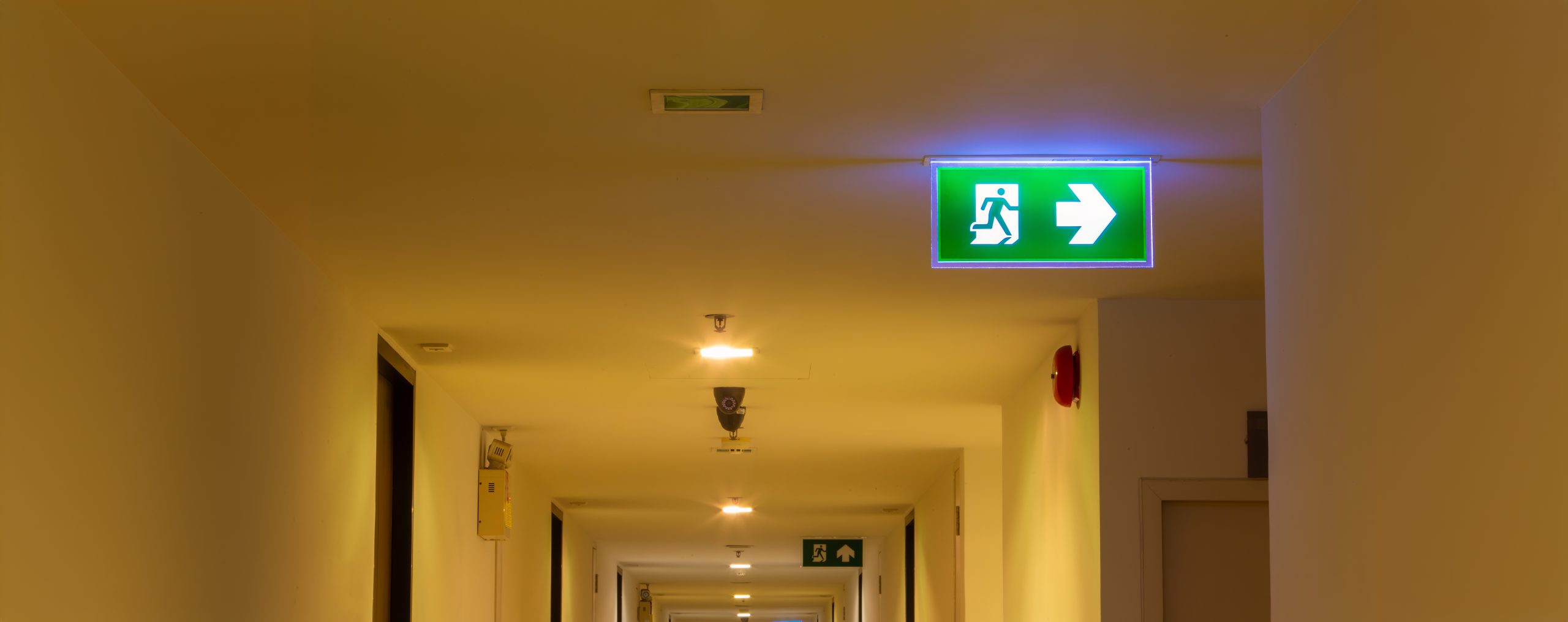For businesses in Glenfield Park and Wagga Wagga, safety should always be a top priority. One crucial aspect of ensuring safety in commercial spaces is having an effective emergency lighting system in place. Regardless of the size or type of your business, reliable and well-maintained emergency lighting can make a significant difference in preserving the well-being of employees, customers, and visitors in case of an emergency.
Emergency lighting serves as a backup lighting system that automatically activates when the primary power supply fails. In situations where dark or hazardous conditions become an immediate concern, such as during fire incidents, power outages, or natural disasters, emergency lighting can help guide people safely towards exits and evacuation routes. Moreover, ensuring that your emergency lighting system is up-to-date and fully functional is not just a moral responsibility, but also a legal one, as per Australian Standards.
In this comprehensive guide, we delve into the importance of emergency lighting in businesses across Glenfield Park and Wagga Wagga. Specifically, we will discuss the various types of emergency lighting, legal requirements and regulations, installation and maintenance best practices, and working with professional electricians to guarantee safety and compliance with the relevant laws and standards. Whether you are starting a new business, expanding your existing premises, or looking to improve the safety measures in your commercial space, this guide will serve as a valuable resource to help you make well-informed decisions about your emergency lighting needs.
Types of Emergency Lighting
There are various types of emergency lighting systems available, each serving a specific purpose in guiding occupants to safety during emergencies. These systems typically fall into two main categories:
- Exit Signs: Exit signs are essential in guiding people towards the nearest and safest exit routes during emergencies. They are typically illuminated and designed to be visible in both light and dark conditions.
- Emergency Luminaires: Emergency luminaires provide backup illumination when the primary power supply is disrupted. These lights turn on automatically and help maintain visibility within an area, allowing occupants to navigate safely during an emergency.
Legal Requirements and Regulations
In Australia, it is mandatory for businesses to comply with the Australian Standards AS/NZS 2293, which governs emergency lighting requirements for various types of commercial buildings.
- AS/NZS 2293.1: Design and Installation: This standard establishes guidelines for the design, installation, and positioning of emergency lighting systems within commercial spaces.
- AS/NZS 2293.2: Inspection and Maintenance: This standard outlines the requirements for regular inspection, testing, and maintenance of emergency lighting systems to ensure continued functionality and reliability.
- AS/NZS 2293.3: Emergency Escape Luminaires and Exit Signs: This standard specifies the performance and installation requirements for emergency exit signs and escape luminaires.
Installation and Maintenance Best Practices
To ensure optimal safety and compliance, businesses in Glenfield Park and Wagga Wagga should adhere to the following best practices for emergency lighting installation and maintenance:
- Work with Licensed Electricians: Collaborate with experienced and licensed electricians who understand the local regulations and requirements for emergency lighting systems. This collaboration will ensure the proper design, installation, and maintenance of your system.
- Regular Testing and Inspection: Schedule regular testing and inspections of your emergency lighting system in accordance with AS/NZS 2293.2 to confirm its functionality and identify potential issues at an early stage.
- Keep Maintenance Records: Maintain comprehensive records of all maintenance, testing, and inspections for your emergency lighting system. These records will help prove compliance during audits and ensure ongoing safety for occupants.
Tips for Working with Professional Electricians
To successfully implement an emergency lighting system for your Glenfield Park or Wagga Wagga business, collaborate with an experienced electrician. Here are some tips for working with electrical professionals:
- Evaluate Your Business’s Needs: Before engaging with an electrician, consider your business’s unique requirements for emergency lighting. These requirements may depend on factors such as occupancy levels, building layout, and the nature of your operations.
- Discuss Your Expectations: Clearly communicate your expected outcomes for the emergency lighting project, including your safety and compliance goals. This transparency ensures that the electrician understands your needs and can design the most appropriate solution.
- Request Documentation: Ask for documentation, such as certifications and insurance coverage, from your prospective electrician. This verification will help you ensure that you are working with a reliable professional who is capable of fulfilling the job requirements.
Conclusion
Having an effective and compliant emergency lighting system is crucial for businesses in Glenfield Park and Wagga Wagga. By understanding the different types of emergency lighting, adhering to relevant regulations, and following best practices for installation and maintenance, you can create a safe environment for your employees, customers, and visitors. Moreover, working with a licensed and experienced electrician will ensure the proper design, installation, and maintenance of your emergency lighting system, resulting in continued safety and compliance for your business.
If you need assistance implementing an emergency lighting system for your Glenfield Park or Wagga Wagga business, our team of skilled electricians is ready to help. Contact Riley Smith Electrical today to discuss your requirements and receive a tailored solution that ensures safety, compliance, and peace of mind.

